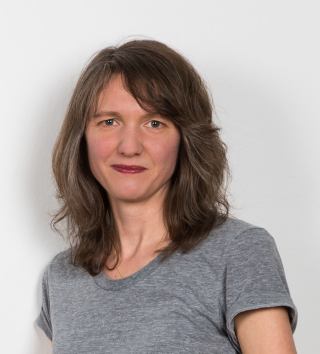Chisenhale Gallery occupies a unique position in the contemporary art world. It was established in the 1980s in a converted veneer factory abreast the Regent’s Canal in London’s East end. Since then, it has produced up to five major commissions each year in pursuit of its mission to offer emerging artists a platform for their first major solo shows in the United Kingdom. It has found significant success. In 1997, Chisenhale hosted Wolfgang Tillmans for his breakthrough show, ‘I Didn’t Inhale.’ Three artists in the recent Turner Prize shortlist also held formative shows at Chisenhale: Anthea Hamilton in 2008, Josephine Pryde in 2013, and Hanna Martin, a graduate of the Ruskin, in 2012. In 2017, Chisenhale will host exhibitions that include commissioned works from Alex Baczynski-Jenkins and Maeve Brennan, among others.
Polly Staple became the gallery’s artistic and operational director in 2008. In December 2016 she delivered the final lecture of Modern Art Oxford’s (MAO) ‘Celebrating 50 Years’ program, discussing both her career and the nuances of commissioning artwork. The lectures were designed to consider key developments in contemporary visual culture. Staple was a sensible choice: as Chisenhale’s director, she continuously negotiates past artistic movements and envisions (typically two years in advance of a show) new commissions. Staple plays a larger role in artistic production than is typical, as Chisenhale not only serves as a community resource centre, but strives to work intimately with artists “from project inception to realisation.”

Staple’s knowledge is vast, and reflects the fact that she has held diverse positions in the art world: after receiving a fine art degree from Goldsmiths, she became co-editor of Untitled magazine, worked with Cubitt, and started writing for frieze. Her lecturing was likewise variegated: she began with a narration of Chisenhale’s history, before musing on various artists’ projects in an improvisational style. She focused on her relationship with them, which she described as being that of a “critical friend.” She also discussed how production is a “process of nurturing, mentoring, guiding from start to finish.” Chisenhale selects artists based on “their desire to explore pioneering new forms and discourse,” which was a process narrated by Staple both in theory, and practically through case studies.
The lecture was most engaging when Staple discussed the ‘How to work together’ project, which she led over the past five years at Chisenhale. The project involved a series of commissions that explored ideas of labour and the way working environments inform creativity. Staple highlighted the works of three artists who held separate shows as part of the exhibition: Céline Condorelli, Ahmet Öğüt, and Maria Eichhorn. Condorelli, who hosted her show in 2013, placed a series of modified utilitarian objects such as tables, curtains and chairs throughout the gallery. She aimed for visitors to consider how banal objects contain meaning and might embody friendships. Öğüt hosted ‘Happy Together: Collaborators Collaborating’. For the show, Chisenhale became a T.V. production studio in which Öğüt held a series of conversations featuring artists and performers with whom she had previously collaborated. Most recently, Eichhorn, based in Berlin, hosted a project called ‘5 weeks, 25 days, 175 hours’ which required the gallery staff to suspend work for five weeks after facilitating a day long symposium. While online programming continued, the gallery itself was closed, echoing Robert Barry’s Closed Gallery Piece in Amsterdam in 1969. Eichhorn hoped that the time would be “productive” with a creativity catalysed not through objects, but through gesture. While several audience members suggested that the exhibition was merely symbolic, Staple argued that such debate was intentional, and that the symposium,which involved lectures from theorist Isabell Lorey and philosopher Stewart Martin had succeeded in creating dialogue.
It was especially enthralling to listen to Staple recreating the moments in which her team began envisioning a major solo exhibition. She talked, for example, about how Maria Eichhorn’s project originated from conversations between Eichhorn and the curatorial team. Eichhorn arrived in London during a heat wave, and was inspired to close the gallery after seeing the frenetic labour throughout the city. Such an organic process also epitomizes Chisenhale’s method for selecting new artists, which is driven less by an intellectual consideration than intuition. “What kind of work can enable perspective shifting?” and “What don’t I understand about this work?” are important questions for Staple. Perhaps Chisenhale’s success for creating resonant exhibitions lies in this pathos-oriented approach.
The talk, though specific to Chisenhale, certainly illuminated “What’s Important,” and deconstructed the often enigmatic processes that precede a major exhibition. The next show at Chisenhale in January 2017 will involve a commission by artist and choreographer Alex Baczynski-Jenkins, who will fuse the genres of dance and performance art in piece entitled “The tremble, the symptom, the swell and the hole together.” With careful curatorial prowess and a program that will include weekly fugue performances, I am sure it will be exciting and engaging.
Jacob Pagano
For forthcoming events at the Modern Art Gallery, please visit their website.
We are on Twitter @Oxford_Culture, Facebook, and Instagram